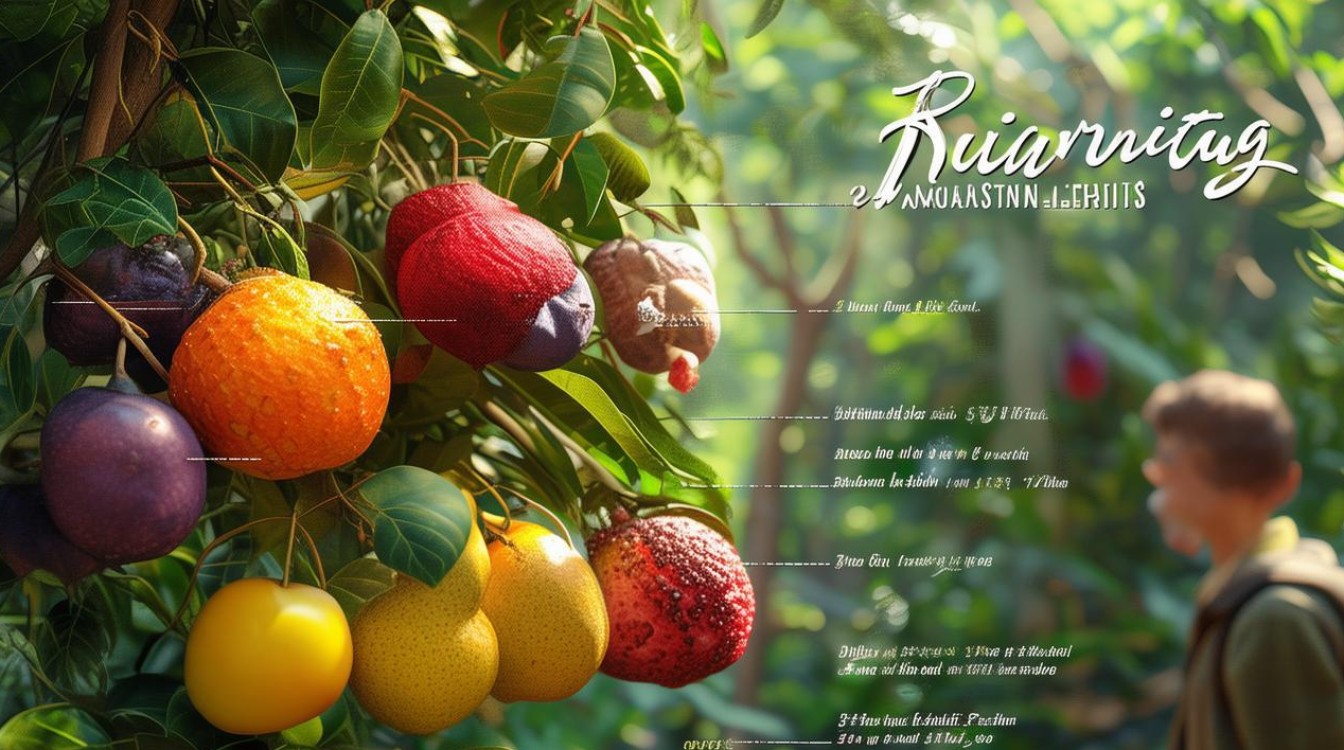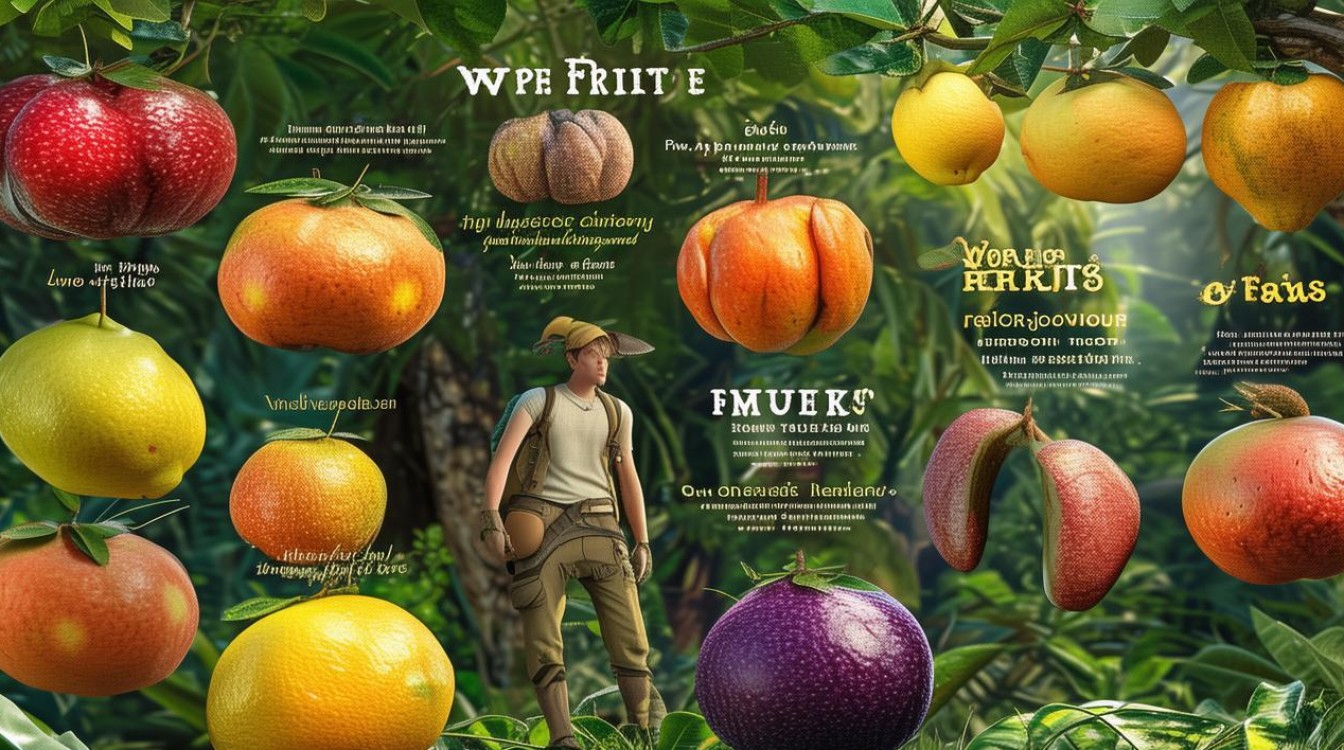Fruits are nature’s sweetest gifts, and their names often carry fascinating linguistic roots. For English learners or curious minds, discovering fruits that start with the letter "W" can be both educational and delightful. This guide dives into a curated list of these fruits, their origins, uses, and cultural significance—perfect for expanding your vocabulary or adding a unique twist to your culinary adventures.

Watermelon
Scientific Name: Citrullus lanatus
Origin: Native to Africa, now cultivated worldwide.
Watermelon is synonymous with summer. Its juicy, hydrating flesh makes it a staple at picnics and beach outings. Beyond its sweetness, it’s rich in vitamins A and C. Fun fact: The world’s heaviest watermelon weighed over 350 pounds!
Culinary Uses:
- Eaten fresh or blended into smoothies.
- Used in salads with feta cheese for a savory-sweet combo.
Walnut
Scientific Name: Juglans regia
Origin: Native to the Mediterranean and Central Asia.
Though often categorized as a nut, walnuts are technically a fruit seed. They’re prized for their brain-boosting omega-3 fatty acids and earthy flavor.
Did You Know?
- Ancient Greeks associated walnuts with intellect.
- The shell’s dye was once used to stain fabrics.
Culinary Uses:
- Toasted in baked goods like banana bread.
- Pressed for walnut oil in gourmet dishes.
White Sapote
Scientific Name: Casimiroa edulis
Origin: Central Mexico.
This lesser-known fruit has creamy, custard-like flesh with a vanilla-peach flavor. Unlike its name suggests, it’s unrelated to the tropical sapodilla.
Health Note:
Contains serotonin precursors, potentially aiding relaxation.
How to Enjoy:

- Eaten raw when soft.
- Blended into milkshakes.
Wolfberry (Goji Berry)
Scientific Name: Lycium barbarum
Origin: Asia, particularly China.
Wolfberries, or goji berries, are antioxidant powerhouses. Traditionally used in Chinese medicine, they’re now a global superfood.
Cultural Insight:
Celebrated in festivals across Ningxia, China.
Usage Tips:
- Dried in trail mixes.
- Brewed into herbal teas.
Wax Apple (Java Apple)
Scientific Name: Syzygium samarangense
Origin: Southeast Asia.
This glossy, bell-shaped fruit has a crisp texture akin to an apple but with floral undertones. Its color ranges from pale green to deep red.
Fun Fact:
In Taiwan, it’s called liánwù and symbolizes prosperity.
Serving Ideas:
- Sliced with chili salt for a tangy snack.
- Juiced for refreshing beverages.
Winter Melon
Scientific Name: Benincasa hispida
Origin: South and Southeast Asia.
Despite its name, winter melon thrives in warm climates. Its mild flavor absorbs spices well, making it a versatile ingredient.
Culinary Spotlight:

- A key component in Chinese dong gua tang (winter melon soup).
- Candied for festive treats.
Wild Orange
Scientific Name: Citrus reticulata
Origin: Southern China.
Wild oranges are smaller and tarter than commercial varieties. They’re ancestors to modern mandarins and prized for their essential oils.
Historical Tidbit:
Used in ancient Ayurvedic remedies.
Modern Uses:
- Zest added to desserts.
- Oils extracted for aromatherapy.
Winged Bean
Scientific Name: Psophocarpus tetragonolobus
Origin: Papua New Guinea.
Every part of this plant—from pods to roots—is edible. Nicknamed the "four-angled bean," it’s protein-rich and thrives in tropical climates.
Nutritional Highlight:
Comparable to soybeans in protein content.
Preparation Methods:
- Stir-fried with garlic.
- Pickled for tangy crunch.
Wineberry
Scientific Name: Rubus phoenicolasius
Origin: Japan, Korea, and China.
This raspberry relative has a jewel-like appearance and tart-sweet flavor. Its name comes from the wine-red hue of ripe berries.
Foraging Note:
Grows wild in parts of North America.

Creative Pairings:
- Topped on pavlovas.
- Fermented into fruit wines.
Wood Apple
Scientific Name: Limonia acidissima
Origin: India and Sri Lanka.
With a hard shell and pungent aroma, wood apple is an acquired taste. Its pulp is used in chutneys and drinks like bel sherbet.
Cultural Connection:
Considered sacred in some Hindu rituals.
How to Serve:
- Mixed with jaggery for a digestive aid.
- Blended into smoothies with tamarind.
Exploring W-starting fruits reveals a world of flavors, from the familiar watermelon to the exotic wood apple. Each offers unique nutritional benefits and cultural stories, enriching both language and plate. Whether you’re a foodie, a gardener, or a wordsmith, these fruits invite curiosity and creativity. Next time you spot a wax apple or crack open a walnut, remember—you’re tasting a piece of history and nature’s ingenuity.
Note: Always verify fruit edibility and allergies before trying new varieties.

